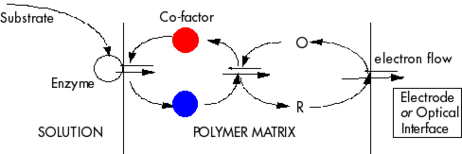Biomimetic Agents for Replacement of NAD+/NADH in Enzymatic Reactions
APPLICATION OF TECHNOLOGY:- Preparation of chiral, pharmaceuticals, or specialty organic compounds - Biosensor technology for medical, chemical and biological sensing
ADVANTAGES:
- Co-factors are stable in air and water - Co-factors are designed without sugar, phosphate, or adenine groups - Co-factors can be used with a system that prevents co-factor loss downstream - The technology enables cost-effective co-factor regeneration
ABSTRACT:
Richard H. Fish, John B. Kerr, and H. Christine Lo have developed several biomimetic NAD+ compounds that enable the production of cost-effective, high value co-factors. These new co-factors will find application in all enzymatic, biocatalysis, and industrial processes that depend on NAD+/1,4-NADH as co-factors for preparation of chiral, pharmaceuticals, or specialty organic compounds.
Between 30-35% of all known enzymes are oxido-reductases and require the use of co-factors to provide sources of reductants and oxidants for the enzymatic reaction to occur. In many cases, the co-factors are NAD+, NADP+, 1,4-NADH or 1,4-NAPDH. The least expensive of these, NAD+, costs ~$2,000/kg, making the co-factors usually much more expensive than the products of the enzymatic reaction.
Berkeley Lab’s new NAD+ compounds fill three distinct requirements for viable synthetic co-factors. (1) They can be regenerated into the desired redox form. (2) They are designed without the natural NAD+ functionalities: the sugar, phosphate, or adenine groups. These are the groups that are typically subject to acid-base hydrolysis reactions that have been reported to lead to inactivity of the co-factors, thus accounting for most of their expense. (3) They can be used with an easily separable support or membrane that provides a suitable means of separation and prevents co-factor loss in downstream processing. This solves one of the major problems currently restricting the use of co-factor regeneration.
Biosensor technology for medical, chemical and biological sensing will be a strong, initial application. With further development, the co-factors potentially could be used in large-scale processing of food, biomass, environmental remediation, and production of renewable feedstocks of chemicals and fuels.
Attached files:

Patents:
US 6,716,596
Inventor(s): Richard H. Fish, John B. Kerr, and H. Christine Lo
Type of Offer: Licensing
« More Biotech Patents
